As the demand for high-quality, durable, and permanent carbon dioxide removal (CDR) solutions continues to grow, enhanced rock weathering (ERW) has emerged as a promising avenue. However, navigating the diverse landscape of ERW suppliers can be daunting for carbon credit buyers.
This comprehensive guide aims to delve beyond the obvious factors like price, availability, and geographic location to equip savvy buyers with six crucial questions to ask when considering an ERW partnership.
Additionally, we provide insights into how we address these questions in our ERW work at Eion, offering a roadmap for informed decision-making.
6 Key ERW Considerations from a CDR Buyer’s Perspective:
- Mineral Selection
- Site Suitability
- Measurement, Verification, & Reporting
- Partnership Dynamics
- Co-Benefits
- Opportunities Beyond Offsets
1. Mineral Selection: What kind of rock does the ERW supplier use?
Lots of different silicate minerals can work for ERW, including olivine, basalt, and wollastonite. We’ll need a variety of companies working with myriad materials to best meet the need for robust CDR action across the globe.
When comparing different minerals for ERW, weathering rates, accessibility, and costs can vary widely between different rocks. Ultimately, two key considerations are the mineral’s effectiveness in weathering and the ability of the supplier to scale its use. Within the scalability question, important considerations include availability and accessibility to a consistent, plentiful source of rock, and whether landowners are willing to have that particular mineral applied to their land.
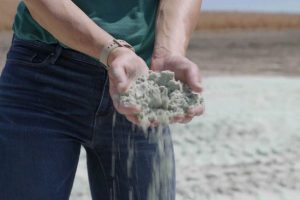 For example, at Eion we’ve opted to use olivine for multiple reasons. Firstly, olivine boasts the highest carbon removal efficiency among silicate minerals, so it’s an excellent choice for ERW. Our olivine soil amendment removes about one ton of CO2 per ton of mineral applied (pending project-specific life cycle analyses).
For example, at Eion we’ve opted to use olivine for multiple reasons. Firstly, olivine boasts the highest carbon removal efficiency among silicate minerals, so it’s an excellent choice for ERW. Our olivine soil amendment removes about one ton of CO2 per ton of mineral applied (pending project-specific life cycle analyses).
Secondly, it’s a 1:1 replacement for a critical agriculture input (agricultural lime, or ag lime) that farmers commonly apply to their fields, so it enables us to scale within the existing structures of agriculture rather than inventing new supply chains. Replacing ag lime with olivine requires no extra work or change in regular farm operations, and farmers get the same soil fertility benefits they get from ag lime.
Finally, it’s plentiful—90 teratons have been located within the Earth’s crust—and we have an excellent, environmentally-conscious source for it through our partnership with Sibelco, the world’s largest olivine producer. At Sibelco’s hydropowered operation in Åheim, Norway, olivine is quarried and then pulverized to Eion’s specifications for fast weathering on fields. Their quarry’s close proximity to the processing facility and shipping terminal enables them to run a large-scale, highly efficient operation with a low CO2 footprint. We then get it to our sites in the U.S. using large bulk ocean transportation, which has a relatively low carbon footprint.
2. Site Suitability: Where does the ERW supplier choose to apply the rock?
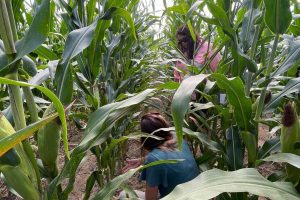 Weathering rates vary widely depending on the environment it’s happening in, so choosing the right location for application is important. Warm, seasonally wet weather is best; an ERW project in tropical Indonesia, for example, will remove CO2 a lot more quickly than one in cold, arid Mongolia.
Weathering rates vary widely depending on the environment it’s happening in, so choosing the right location for application is important. Warm, seasonally wet weather is best; an ERW project in tropical Indonesia, for example, will remove CO2 a lot more quickly than one in cold, arid Mongolia.
At Eion, field trials and soil sampling have helped us understand that ERW with olivine works best when the material is applied on acidic soils in warm, wet climates, so we focus on U.S. farmland that meets these conditions in the mid-South and Midwest. By concentrating on farmland, we can leverage existing agricultural supply chains to minimize emissions and rapidly access acres.
3. Measurement, Verification, & Reporting: How does the ERW supplier approach measurement, reporting, and verification (MRV)?
Working with nature is messy, so there will always be some uncertainty about how much carbon dioxide is removed in the process of ERW. Two common approaches include using modeling to predict weathering rates and directly measuring soils before and after application. Collaboration with scientific institutions, peer-reviewed research, and transparency in their methods are all good indicators that a supplier has a strong MRV foundation.
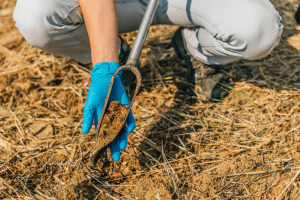
Eion champions direct soil measurement over hypothetical modeling because it takes more real-world variables into account—a critical advantage when working in a natural, open system. Direct measurement enables us to prove carbon removal has happened, rather than estimating using models. Eion’s industry-first patented approach directly measures carbon dioxide removed by using before-and-after direct soil samples to look at immobile trace elements, showing that the applied minerals removed CO2 from the atmosphere to be transported away to be permanently sequestered.
To advance the practice of MRV, Eion collaborates with standards-bearers, verification bodies, and research institutions, including co-authoring a peer-reviewed paper with leading academics from the University of Illinois Urbana-Champaign (UIUC) and the Leverhulme Center for Climate Mitigation. We believe in sharing what we learn for the benefit of all, so our co-founder and CSO Elliot Chang created the International Science-In-Industry ERW Working Group to further foster scientific collaboration, and Eion scientists also regularly present at international conferences and share white papers to advance the field.
4. Partnership Dynamics: What relationships are central to the supplier’s ERW approach?
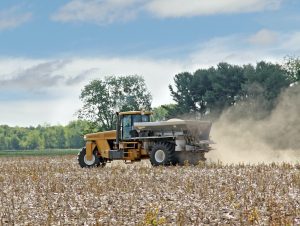 Relationships are critical to building scalable ERW projects, so it’s essential to assess whether a supplier has the partnerships in place to be effective. Suppliers need networks and agreements in place to source, pulverize, and transport rock, and they require strong relationships with landowners and communities for successful scaling.
Relationships are critical to building scalable ERW projects, so it’s essential to assess whether a supplier has the partnerships in place to be effective. Suppliers need networks and agreements in place to source, pulverize, and transport rock, and they require strong relationships with landowners and communities for successful scaling.
At Eion, our partnership with Sibelco guarantees Eion a minimum of 500,000 tons per year of olivine crushed to our ideal level of fineness. Our deep understanding of agronomic concerns and approaches means we’ve been able to build trusted relationships with farmer co-ops and agronomic advisors; through partnerships with Southern Ag and other groups, we have access to more than 75 million acres of farmland.
5. Co-Benefits: What impact does the supplier’s ERW approach offer beyond removing CO2?
Beyond the primary goal of CO2 removal, it’s worth considering additional co-benefits that a specific approach to ERW may offer. These can include job growth, community support, and other positive impacts.
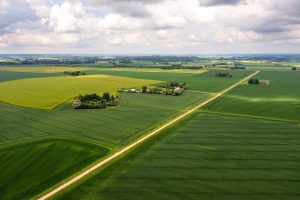 For example, Eion’s approach extends beyond carbon removal, fostering rural prosperity by creating stable jobs. To bring marginalized groups into the decarbonization economy, Eion prioritizes working with farms in Justice-40 tracts, which designate historically disadvantaged U.S. communities.
For example, Eion’s approach extends beyond carbon removal, fostering rural prosperity by creating stable jobs. To bring marginalized groups into the decarbonization economy, Eion prioritizes working with farms in Justice-40 tracts, which designate historically disadvantaged U.S. communities.
In addition, olivine safely and effectively balances pH levels, so Eion helps farmers enhance their soil health and crop performance. Expensive seeds and fertilizers can’t deliver on their promised value if a farm’s soil is not at the proper pH level. Offering an alternative to ag lime also offers farmers more operational freedom and choice.
6. Opportunities Beyond Offsets: Are there other ways to collaborate with the ERW supplier?
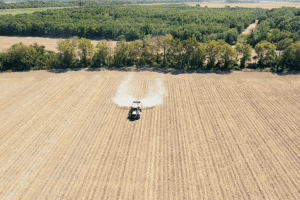 The ERW category is still nascent, and there are many ways to partner with suppliers to grow the technology’s impact in service of both company goals and the planet. Purchasing carbon removal credits is the most common way to work with suppliers, but there are other paths to investigate as well.
The ERW category is still nascent, and there are many ways to partner with suppliers to grow the technology’s impact in service of both company goals and the planet. Purchasing carbon removal credits is the most common way to work with suppliers, but there are other paths to investigate as well.
At Eion, we’re actively pursuing how we can integrate ERW directly into existing value chains via inset pilots and projects. Insetting empowers companies to remove atmospheric CO2 within their own operations and lower or even negate their Scope 3 emissions. For example, we’re exploring value-add partnerships within agriculture that can help make consumer products uniquely carbon negative, as well as insetting pilots to enable large businesses to mitigate their emissions in house.
ERW has the potential to remove an astounding two gigatons of carbon dioxide annually, and credit buyers have a crucial role to play in scaling this promising technology. By digging in with potential suppliers and asking good questions, buyers can help the industry as a whole scale while prioritizing high-quality, responsible carbon removal.
To learn more about how to make an informed decision in the ERW space or hear more about the choices Eion makes in our approach, reach out to our team at hello@eion.team.